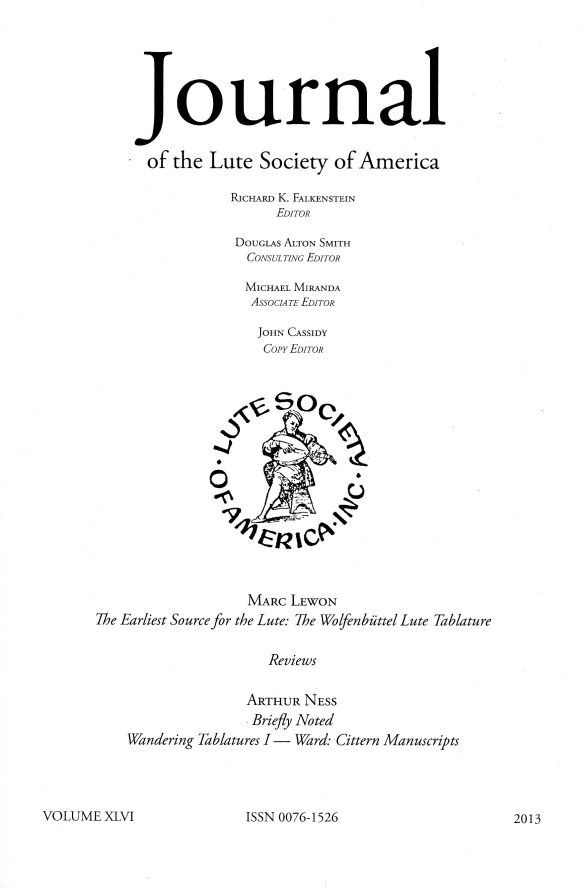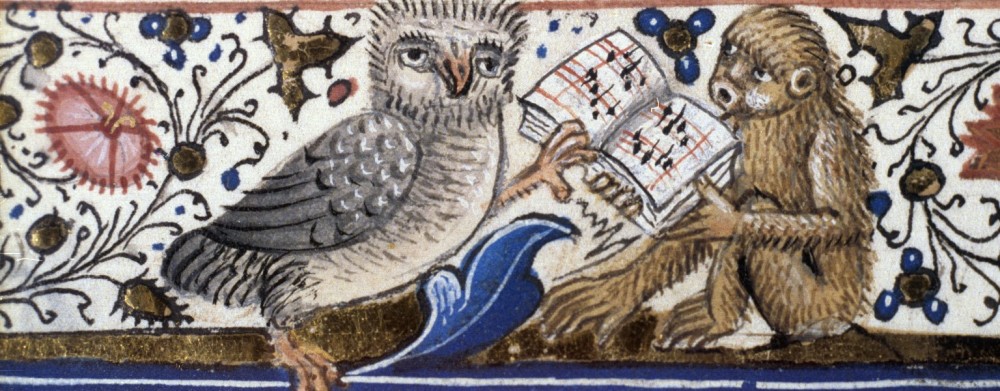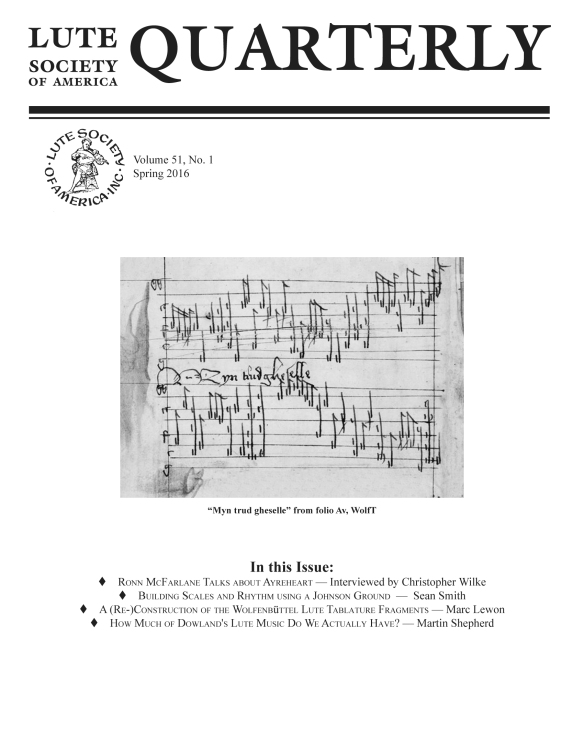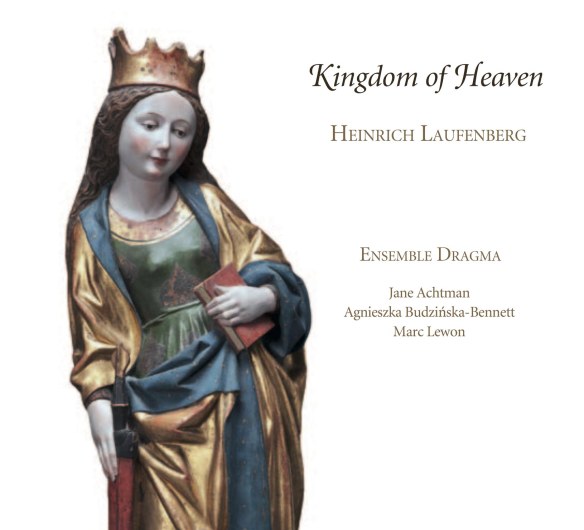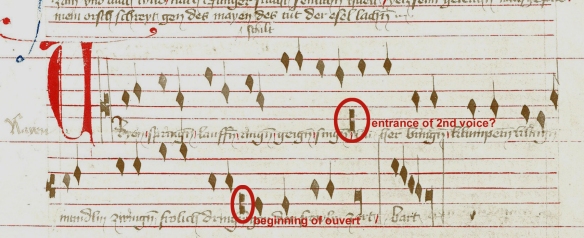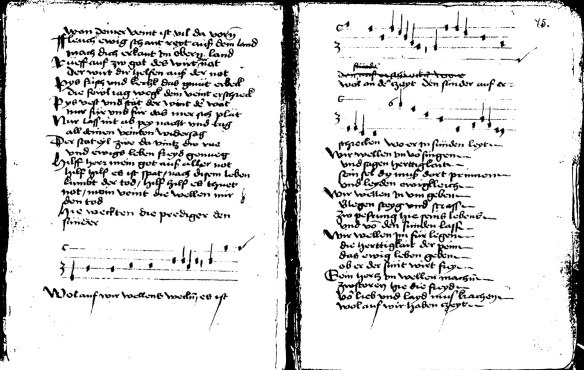A new contrafact in a well-known source has come to light and I would like to thank Regina Schmidt, who studied with me and who is credited with the discovery of this version, for sharing her finding and allowing me to present it on my blog site.
[20/06/2016 Update: Two years after this seemingly new find we were made aware that the contrafact had independently been identified in a Czech publication some ten years previously: Jaromír Cerný et al. (eds.): Historicka antologie hudby v ceských zemích (do cca 1530) / Historical anthology of music in the Bohemian lands (up to ca 1530), Prague (Koniasch Latin Press) 2005, pp. 122-123. My thanks go Reinhard Strohm who found the reference.]
The Hohenfurter Liederbuch (CZ-VB 8b; Southern Germany, c1450) is an exciting source for sacred contrafacts on secular songs in the vernacular. The annotations to some of the songs by the first editor of the manuscript, Wilhelm Bäumker, show that he had realized the significance of this manuscript and identified many concordances and cognates.[1] The song no. 52 “O sünder, grosser sünder” (“O sinner, great sinner”) on the popular melody “Nu lobe linde lobe” (“Now leaf, linden tree, leaf”)[2] is a good example for the procedure of providing secular songs with new, sacred texts, a practice, which is also witnessed by a number of other German sources from the same time, such as the Codex St. Emmeram (D-Mbs Clm 14274; Vienna & Regensburg c1435-c1450), the now lost Strasbourg Codices (the Strasbourg manuscript (olim: F-Sm 222 C. 22; Zofingen, c1410 & Basel c1435) and the Songbook of Heinrich Laufenberg (olim: F-Sm, B 121; first half 15th century), both consumed by fire in 1870), as well as the slightly later Pfullinger Liederhandschrift (D-Sl Cod. theol. et phil. 4° 190; Pfullingen, c1470/80) and the Songbook of Anna of Cologne (D-B mgo 280; c1500).
“Es ist geporn ain kindelein” (CZ-VB 8b, fol. 118r-119r)
It is worthwhile to occasionally revisit such well-known sources, as this new find reminds us: No. 72 of the Hohenfurter Liederbuch (CZ-VB 8b, fol. 118r-119r)—”Es ist geporn ain kindelein”—proves to be a German contrafact on the anonymous French chasse (actually a round) “Talent m’est pris” (2-3vv)[3], which up to now had gone unnoticed. Continue reading →
